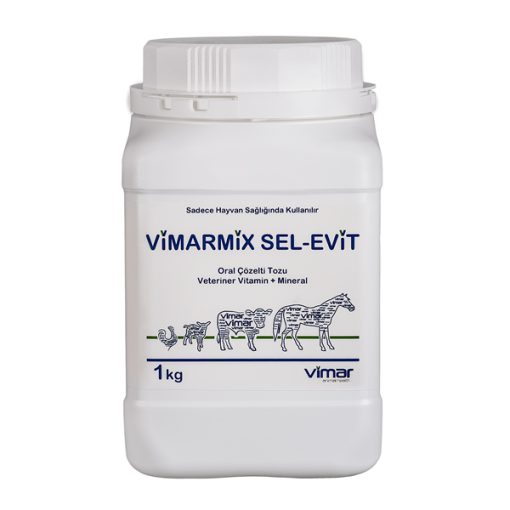Alamycin LA
Solution for Injection
QUALITATIVE AND QUANTITATIVE COMPOSITION
Each ml contains:
Active Substance:
Oxytetracycline base 300 mg
(as Oxytetracycline dihydrate)
Excipients:
Sodium Formaldehyde Sulphoxylate 4.0 mg
Target Species: Cattle, pigs and sheep
Indications for use, specifying the target species
For the treatment and control of conditions caused by, or associated with, organisms sensitive to
oxytetracycline including:
Bordetella bronchiseptica
Actinomyces pyogenes
Erysipelothrix rhusiopathiae
Pasteurella spp.
Staphylococcus spp.
Streptococcus spp.
Certain mycoplasma, rickettsiae, protozoa and chlamydia.
Alamycin LA 300 may be used in the treatment and control of a wide range of common systemic, respiratory, urinary and local infections caused by oxytetracycline sensitive organisms. Specific indications for Alamycin LA 300 include: pasteurellosis, pneumonia, atrophic rhinitis, erysipelas, joint-ill, navel-ill, supportive therapy in bovine mastitis, ovine keratoconjunctivitis (pink-eye) and enzootic abortion in sheep.
Contraindications
Do not dilute the Alamycin LA.
Do not use in animals with known hypersensitivity to the active ingredient.
Special warnings for each target species
No special warnings.
Special precaution(s) for use in animals
If conccurrent treatment is administered use a seperate injection site.
Use of the product should be based on susceptibility testing of the bacteria isolated from the animal. If this is not possible, therapy should be based on local (regional, farm level) epidemiological information about susceptibility of the target bacteria.
Special precautions to be taken by the person administering the veterinary medicinal product to animals
No special operator warnings.
Adverse reactions (frequency and seriousness)
Local reaction characterised by swelling and/or hardness may be observed at the injection site following treatment.
These lesions are of a transient nature, resolving within 1 to 3 weeks after treatment.
Hypersensitivity reactions, including anaphylaxis (sometimes fatal), have been reported very rarely.
Use during pregnancy, lactation or lay
The use of Alamycin LAduring the period of tooth and bone development, including late pregnancy,
may lead to discoloration. Alamycin LA can be safely administered during lactation.
Interaction with other medicinal products and other forms of interaction
None known.
Amounts to be administered and administration route
Deep intramuscular injection.
To ensure a correct dosage body weight should be determined as accurately as possible.
Alamycin LA can be administered at the standard dose of 20 mg/kg for 3 to 4 days duration of
activity for the treatment and control of conditions caused by organisms sensitive to the action of
oxytetracycline. Alamycin LA can be administered at the high dose of 30 mg/kg for the treatment and control of respiratory infections in sheep, pigs and cattle.
Cattle, sheep and pigs:
Standard dose – 20 mg/kg (1ml/15kg)
High dose – 30 mg/kg (1ml/10kg)
Maximum recommended dosage at one site:
Cattle: 10 ml
Sheep: 5 ml
Pigs: 10 ml
Piglets: 1 day 0.2 ml
7 days 0.3 ml
14 Days 0.4 ml
21 Days 0.5 ml
over 21 Days 1 ml/10 kg
Overdose (symptoms, emergency procedures, antidotes), if necessary
Not applicable.
Withdrawal Period(s)
Animals must not be slaughtered for human consumption during treatment.
Cattle may be slaughtered for human consumption only after 35 days from the last treatment.
Pigs and sheep may be slaughtered for human consumption only after 28 days from the last treatment.
Milk for human consumption must not be taken during treatment. Milk for human consumption may only be taken from cows after 10 days from the last treatment. Milk for human consumption may only be taken from sheep after 8 days from the last treatment.
PHARMACOLOGICAL or IMMUNOLOGICAL PROPERTIES
Pharmacotherapeutic group: Antibacterials for systemic use, tetracyclines.
ATCvet Code: QJ01AA06
Pharmacodynamic properties
Oxytetracycline is a bacteriostatic antibiotic that inhibits protein synthesis in susceptible bacteria. Inside the cell it binds irreversibly to receptors on the 30S subunit of the bacterial ribosome where it interferes with the binding of the aminoacyl-transfer RNA to the acceptor site on the messenger RNA ribosome complex. This effectively prevents the addition of the amino acids to the elongating peptide chain, inhibiting protein synthesis.
List of excipients
Magnesium Oxide
Dimethylacetamide
Sodium formaldehyde Sulphoxylate
Water for Injections
Incompatiblities
Dilution with solutions of calcium salts will cause precipitation and must be avoided.
Shelf-life
Shelf-life of the veterinary medicinal product as packaged for sale: 2 years
Shelf-life after first opening the immediate packaging: 28 days.
Special precautions for storage
Store below 25 C. Protect from light.
Keep the vial in the outer carton.
Nature and composition of immediate packaging
The product is packaged in 100 ml, 250 ml and 500 ml amber type I glass vials sealed with bromobutylbungs and aluminium caps.
The 100ml vial is contained in a carton. The 250ml and 500ml vials are contained in plastic bottle
protectors.
Not all pack sizes may be marketed.
Special precautions for the disposal of unused veterinary medicinal products or waste materials
Unused product or waste material should be disposed of in accordance with current practice for
pharmaceutical waste under national waste disposal regulations.




